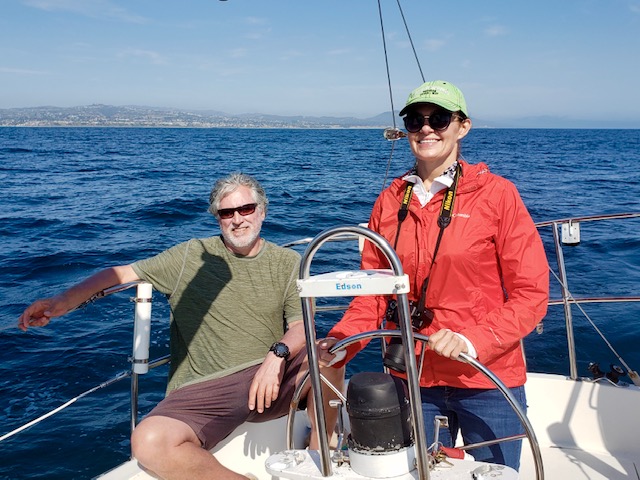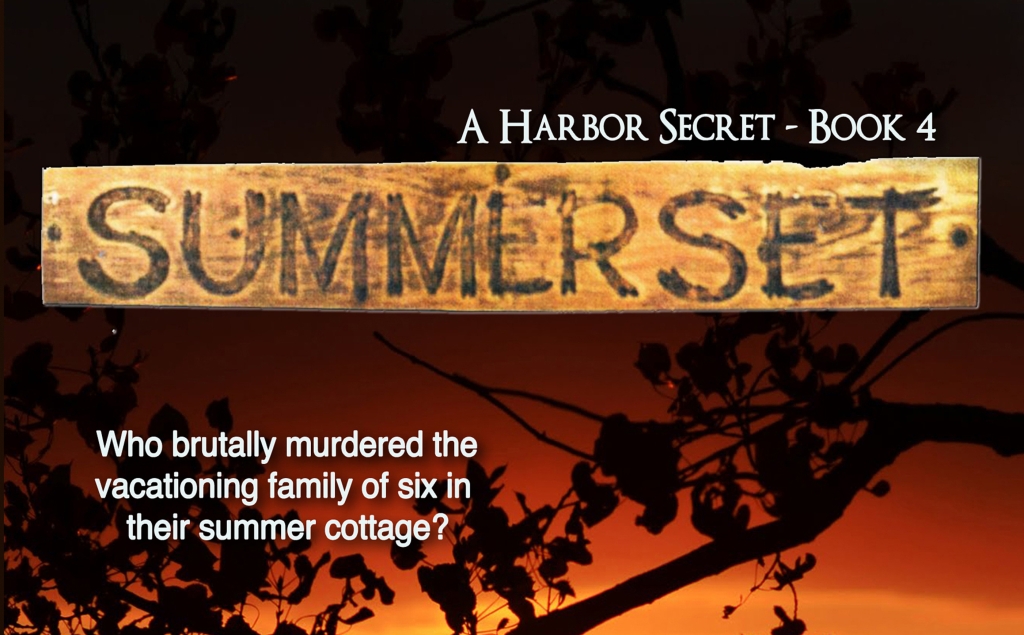Tags
#adventure, #boat, #california, #sail, adventure, boat, boating, california, sail, sailing
One of the earliest things I placed on my extensive goal list is to learn to sail. When one of my guy-friends invited me to go sailing with a group of his buddies, I was all over it. Now, where to find a cute sailor hat?
As the three passengers and a captain eagerly climbed onto the boat, the captain began to point things out using sailor talk. By “sailor talk,” I don’t mean dirty words or that he spoke like a pirate (that probably would have made it more fun though!); I mean that he began to use jargon that was completely unfamiliar to me. As I watched him point out and name ropes that all basically looked the same to me, he dropped words such as jib, jibe, jibing, tacking, port, starboard, helm, bow, stern, winch, mainsail, luffing, and mast. The more he spoke, the more I had no idea what he was saying.
Growing up in a sailing town, there was a girl in my class named Jib. It wasn’t until now that I realized her parents were probably passionate sailors. Needless to say, Jib did not join us that day; but the jib was a hot topic of conversation.
Before leaving the slip, I helped take the cover off the mainsail. There’s probably a fancy sailor name for “cover,” but it was lost in the sea of new terminology. Under the cover, there were straps keeping the sail in place. We undid all but one strap, learned where the life vests and winch (not to be confused with “wench”) handles were, and, ta-da, we were off!
The captain motored us through the marina and, about halfway out, we undid the final tie, and another crew member was told to help me pull a fat, blue rope that would hoist the sail. “Help me?” Did I really look like I needed help pulling a rope? In the beginning, no, I didn’t need help. It was all fun and games until the sail got about halfway up. Suddenly, my scrappy arms could not move the rope. Not even a single inch. One of the guys jumped in to help and was able to get it higher, but we finally had to wrap the rope around a winch to finish the task. I learned that you only wrap the rope around a winch clockwise and, to lock it, you do two wraps, then run it over this silver thingy, put it into a groove, and pull it around. Now you can all do it, right? Oy, so much to remember.
As soon as we got out of the harbor, we saw six coastal bottlenose dolphins! I was more excited about the dolphins than the jib, but it was jib time. For laypeople, the jib is the pretty, colored, smaller sail at the front, or bow, of the boat. The jib has a skinny, white rope attached to it. Again, getting the jib up involved some major rope pulling and winching that was super difficult. I wished I’d skipped my weight-lifting that morning.
Once my friend, jib, was up, we had to turn the boat to catch the wind. We circled around for a few minutes, trying to figure it out but, once we caught the wind, off we went!
They asked where we wanted to go, and I pointed to the whale-watching boats on the horizon. “They’re on a whale!” I knowledgeably announced to the other crew members who were much less interested in the coastal bottlenose dolphins and whales than I was.
Off we went towards the whale-watching boats, passing a couple of groups of common dolphins along the way.
“Want to try tacking?” the marine biologist aboard asked me.
“Uh, does it get us to the whales faster?” I asked with my one-track mind.
“No,” he said with a point. “It will take us that way.”
Following his pointing finger, I realized it would take us away from the whale. Not where I wanted to go. “Nope,” I told him.
With me taking a turn at the wheel (maybe there’s a more sailor-y word for it), I steered us toward the other boats at what seemed like a painfully slow speed. The forecast had predicted four-foot waves, which predicted Dramamine for me, so I was all drugged up and ready to go; however, the forecast was wrong. We had little wind, little waves, and lots of bobbing. If we tried to turn and the wind didn’t hit the sail correctly, causing them to flap, it was called luffing. No one gets anywhere with luffing. Needless to say, the other boats and the whale left long before we got to the whale hang-out.
“Want to try tacking now?” the marine biologist again asked.
“Does it involve pulling ropes?” I asked skeptically.
“Yep.”
Oy. For tacking, you move my friend jib from one side to the other by releasing the rope I had worked so hard to pull and secure. I then had to pull a similar-looking rope on the opposite side of the boat. When the pretty-colored jib sail gets to the other side, it again catches the wind and sends you in a completely different direction. To get anywhere, you basically have to go back and forth in a zig-zag. I quickly decided that that’s why God gave us motorboats.
Any time you learn something new, it can be overwhelming, and sailing is no exception. There are tricky knots you need to learn to tie, there are ropes you have to be able to distinguish one from the other, and there are weird names for the sides of the boat.
Could they just say left, right, front, and back? Noooo. The left side is called the port side. Don’t ask me why. The right side is called the starboard side, and that’s because there used to be (and maybe still is) a board for steering located on the right side. I guess “steer board” got slurred into “starboard” over the years, or maybe someone just spelled it wrong, and it stuck. Again, I received a lot of information and only retained a little.
The easy terms were the bow, or front of the boat, and stern, which is the back of the boat. I guess there’s this helm-thing on the bottom of the boat that’s super heavy, so it’s engineered to keep the boat from tipping, which was good news for my camera.
We did see a whale spout, and I could tell it was a big one. “Thar she blows!” I shouted with a point as all heads turned to spot the whale we thought we had lost.
“Do you want to go back now?” the marine biologist asked me. “It’s getting towards 5:00.”
“You’re asking the wrong person,” I told him. All doped up on Dramamine and with a whale in site, I could stay out there until nightfall.
Giving my whale chasing a chance, we bobbed slowly after it, never really moving very far. It wasn’t long before I saw the whale’s spout far in the distance. Sigh. “Okay, we can go back,” I gave in.
Returning to the slip was about as tricky as getting out to the ocean, only, this time, everything was in reverse. Skinny rope, fat rope, pull, pull, pull, and then turn, turn, turn. We finally turned on the engine and moved painfully slowly through the harbor as crew members such as myself tied the sail down and pulled the cover over it.
This is what I took away from my sailing adventure: Sailing is very peaceful, calm, and quiet. You don’t need to yell to speak to people, your hat won’t blow off, and you probably aren’t going to get anywhere quickly. I’m sure that last comment would change on a windier day. Sailboats are very environmentally friendly. Although she was not present, the girl in my class, Jib, was on my mind all day.
Would I go sailing again? You bet (but not when I’m trying to catch up to a whale…or a buoy)! The only way to get better at something is repetition and practice. Hopefully, I’ll get a chance to sail again before I forget the difference between the fat rope and the skinny rope.
May you all try something new and sail happily into the sunset. Below is a pic from my sailing adventure.
“Summerset” is now available in ebook, audiobook, and paperback!


